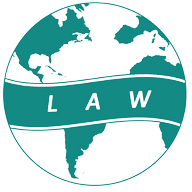Harrison Odiawa V. Federal Republic of Nigeria (2008)
LawGlobal-Hub Lead Judgment Report
DALHATU ADAMU, J.C.A.
The appellant herein was convicted and sentenced by the High Court of Lagos State (No 40) Ikeja Judicial division (per J.O.K Oyewole J) which found him guilty on 48 counts for the offences of-
(a) Conspiracy to obtain money by false pretences;
(b) Obtaining money by false pretences
(c) Forgery
(d) Possession of documents containing false pretences; and
(e) Uttering
The facts leading to the charges of the various offences against the appellant (as per the 3rd amended information of 19/11/04 with 58 counts) are as follows:-
Sometime between March 2003 and January 2004, a syndicate of fraudsters by way of an advanced fee fraud duped and obtained various sums of money amounting to about US D2M from an American citizen by name Mr. George Blick (the victim and PW1). The leader of the syndicate used a fictitious name of Abu Belgore and they used telephones (including GSM) and internet in making false representation and sending fake or forged documents to their said victim who was convinced or deceived to send or transfer the various sum of US dollars to some bank accounts in Nigeria and elsewhere which were later claimed by or for the use of the syndicate. The e-mail communication between Abu Belgore and the victim gave a false representation inter-alia that there was a huge sum of US Dollars (about USD 20.5M) to be transferred to his Company account in USA from Nigeria and also to procure some contracts from Nigeria Government (or ministries) for his benefit or that of his company. He reported the fraud in Nigeria through the EFCC, which started investigation into the cyber – fraud, or information technology (IT) fraud. In the course of their investigation, the EFCC, were able to trace the existence of an Internet facility called Communication Trend Limited (CTL) as the location from where the e-mails (or internet) messages were sent to the victim by Abu Belgore. The EFCC investigating team also found that the CTL was located at the business premises of the appellant who operated a commercial internet, browsing, business (cybercafe) thereat. When the appellant’s business premises were raided by the EFCC team, a green bag was recovered (Exhibit P 19) which contained copies of some of the documents sent to PW1 by Abu Belgore. In addition, a GSM telephone with an MTN line number (No.08035856409), which had been used to communicate to the said PW1 by Abu Belgore, was recovered from the appellant’s office. Also in addition, the appellant made a confessional statement (in Exhibits p.15 – p.18 that he changed a password (in his computer) and was able to communicate to the victim by impersonating that he was Abu Belgore. Some personal documents of the appellant and his specimen handwriting or signatures were also recovered and sent along with the documents in Exhibit P 19 (i.e. the green bag) issued and signed by the so called Abu Belgore to the handwriting analyst (an expert) (pw5) who, in his positive report, confirmed that the two sets of documents were written by one and the same person – i.e. the appellant.
In proof of its charges or counts against the appellant, the prosecution called 8 witnesses and closed its case. The appellant testified as DW 3 in his defence and called two (2) other witnesses DW1 and 2. After the summing up and final addresses, the trial Judge adjourned for judgment which was delivered on 13/1/2006 in which the appellant was found guilty, convicted and sentenced on 48 counts. He was however found not guilty on the remaining 10 counts of the 3rd amended information containing 58 counts and accordingly discharged. The appellant being aggrieved and dissatisfied with his conviction and sentence (on the 48 counts), by the learned trial judge is now appealing against them in this Court. In his notice of Appeal dated 9/2/06 the appellant filed 6 (six) grounds of appeal from which he distilled 4 (four) issues for the determination of the appeal.
In his brief of arguments dated 27th and filed on 28th of November, 2006 adopted at the hearing of the appeal, the four (4) issues formulated in the appellants brief are as follows: –
“5.5.1 ISSUE NO.1
a). Whether the evidence led by the prosecution at the lower Court identified the Appellant as the Abu Belgore that defrauded Mr. George Blick (PW1) in 2003. (Ground 1 of the Notice of Appeal).
ISSUE NO.2

Leave a Reply